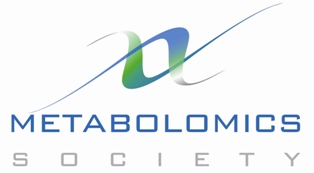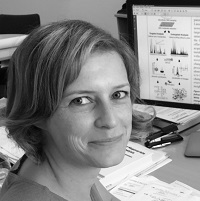
TMIC and the Metabolomics Society
Issue 76 - December 2017
CONTENTS:
Online version of this newsletter:
http://www.metabonews.ca/Dec2017/MetaboNews_Dec2017.htm

 |
| Published
in partnership between TMIC and the Metabolomics Society Issue 76 - December 2017 |
|
CONTENTS: |
|
|
 |
| TMIC
Services |
 |
Metabolomics Society News |

| |
Metabolomics
Spotlight
|

| |
MetaboInterview
|
| Scientific
Coordinator
and Director
of the
Metabolomics
Unit, a Senior
Lecturer at
the Faculty of
Biology and
Medicine,
University of
Lausanne,
Lausanne,
Switzerland |
|
 |
Biography Julijana Ivanisevic is a Coordinator of Metabolomics Service and Research Unit and a Senior Lecturer at the Faculty of Biology and Medicine, University of Lausanne (www.unil.ch/metabolomics). Her research expertise is in mass spectrometry-based metabolomics application to biomedical research, evolutionary biology and ecology; and the focus of her research group is on metabolomics-led study of brain energy metabolism in health, ageing and disease to decipher the neurochemistry of cognition. She joined the University of Lausanne (UNIL) in September 2015 after working as a postdoctoral researcher in Prof. Gary Siuzdak's Center for Metabolomics and Mass Spectrometry, The Scripps Research Institute in La Jolla, California, USA. She received her PhD in Biology at the Aix-Marseille University (Marseille, France) in 2011. |
 |
Metabolomics
Current
Contents
|
Metabolomics
Events
|
| 6-8 Dec
2017 |
Multiple biofluid and tissue types, from sample preparation to analysis strategies for metabolomics Venue: Birmingham Metabolomics Training Centre, School of Biosciences, University of Birmingham, Birmingham, UK This 3-day course will provide a comprehensive overview of dealing with complex biological samples for LC-MS analysis. The course is targeted towards students and researchers who are actively applying metabolomics in their research. The course will be led by experts in the field and include:
For further information and registration details, please visit http://www.birmingham.ac.uk/facilities/metabolomics-training-centre/courses/sample-analysis.aspx or contact bmtc@contacts.bham.ac.uk. |
| 11-13 Dec
2017 |
MetaboMeeting 2017 Venue: University of Birmingham, UK Make plans to attend the 10th successful MetaboMeeting conference. The meeting will bring together research scientists and practitioners from all areas of application and development of metabolic profiling, covering a wide range of experience from early career scientists to experts from throughout the international metabolomics field. MetaboMeeting 2017 continues to highlight the work of its attendees through both oral platform presentation and poster sessions. The deadline for oral presentation abstracts is 15th July 2017. The deadline for poster abstracts is 1st October 2017. For further information, visit http://metabomeeting2017.thempf.org/. |
| 14 Dec
2017 |
Free Practical Course - PhenoMeNal e-infrastructure: taking metabolomics data processing and analysis to the cloud Venue: University of Birmingham, UK No registration cost. Register here. |
| 14-15 Dec
2017 |
Metabolite identification with the Q Exactive and LTQ Orbitrap Venue: Birmingham Metabolomics Training Centre, School of Biosciences, University of Birmingham, Birmingham, UK This two-day course will provide a hands-on approach to teach the latest techniques and tools available to perform metabolite identification. We will apply these tools on the Q Exactive and LTQ Orbitrap mass spectrometry family. The course is targeted towards students and researchers who are actively applying metabolomics. The course will be led by experts in the field and include significant hands-on experience using both the Q Exactive and LTQ Orbitrap instruments to perform:
Bursaries are now available for PhD students funded by the BBSRC, MRC, or NERC. For further information and registration details, please visit http://www.birmingham.ac.uk/facilities/metabolomics-training-centre/courses/metabolite-identification.aspx or contact bmtc@contacts.bham.ac.uk. |
| 8 Jan
2018 |
Metabolomics in Life Sciences Learn about metabolomics principles and their applications in life sciences Venue: Osaka University About this course This course is an introduction to metabolomics principles and their applications in various fields of life sciences. We will provide a summary of all steps in metabolomics research; from experimental design, sample preparation, analytical procedures, to data analysis. The course also provides case studies of various kinds of research samples to attract students that are not familiar with metabolomics, providing them enough explanation to utilize metabolomics technology for their respective research fields. Several examples of metabolomics applications will be introduced throughout the lectures. These include examples within food science and technology, metabolic engineering, basic biology, introduction to imaging mass spectrometry, and application in medical science. No previous knowledge on metabolomics is needed but we recommend that students have an undergraduate-level understanding of Biochemistry, Analytical Chemistry, and Biostatistics, and that they learn about basic principles of multivariable analysis prior to taking this course. For further information, please visit https://www.edx.org/course/metabolomics-life-sciences-osakaux-metab101x. |
| 5-9 Feb
2018 |
EMBO Practical Course on Metabolomics Bioinformatics for Life Scientists Venue: European Bioinformatics Institute (EMBL-EBI) - Wellcome Genome Campus, Hinxton, Cambridge, CB10 1SD, UK Application opens: Friday August 04 2017 Application deadline: Friday November 03 2017 Participation: Open application with selection Contact: Emily Rees Registration fee: £350 including accommodation & food Apply now Overview This course will provide an overview of key issues that affect metabolomics studies, handling datasets and procedures for the analysis of metabolomics data using bioinformatics tools. It will be delivered using a mixture of lectures, computer-based practical sessions and interactive discussions. The course will provide a platform for discussion of the key questions and challenges in the field of metabolomics, from study design to metabolite identification. Audience This course is aimed at PhD students, post-docs and researchers with at least one to two years of experience in the field of metabolomics who are seeking to improve their skills in metabolomics data analysis. Participants ideally must have working experience using R (including a basic understanding of the syntax and ability to manipulate objects). For further information, please visit https://www.ebi.ac.uk/training/events/2018/embo-practical-course-metabolomics-bioinformatics-life-scientists-4. |
| 19-23 Mar
2018 |
Hands-on LC-MS for Metabolic Profiling Venue: Imperial International Phenome Training Centre, Imperial College London, UK Earlybird: £1750 Standard: £1950 This week long course covers how to perform a metabolic profiling experiment from start to finish. It will cover study design, sample preparation, the use of mass spectrometry for global profiling, targeted methodologies and data analysis. Day 1: Introductory lectures in mass spectrometry and chromatography, study design and sample preparation, followed by preparation of biological samples for analysis on subsequent days. Days 2 and 3: Analysis of biofluids through global profiling and targeted analyses; an introductory session to liquid chromatography, followed by sessions on each of the newest QToF and TQ instrumentation. Instrument set up, method development and acquisition will be covered. We have set a maximum of 3 attendees per instrument allowing for hands-on participation by all. Day 3 finishes with introduction to data analysis. Day 4: Data analysis workshops where attendees will process the data acquired from the previous days, mixed with further statistics lectures, allowing for development of interpretation skills. Day 5: Application lectures, tips, tricks and troubleshooting, optional trip to the MRC-NIHR National Phenome Centre. For further information, please visit http://www.imperial.ac.uk/imperial-international-phenome-training-centre/courses/hands-on-lc-ms-for-metabolic-profiling/. |
Metabolomics Jobs |
This
is a resource
for
advertising
positions in
metabolomics.
If you have a
job you would
like posted in
this
newsletter,
please email
Ian Forsythe (metabolomics.innovation@gmail.com).
Job postings
will be
carried for a
maximum of
four issues
(eight weeks)
unless the
position is
filled prior
to that date.
Jobs
Offered
| Job Title | Employer | Location | Posted | Closes | Source |
|---|---|---|---|---|---|
|
PhD
Studentship:
Impact of
Nutritional
and
Environmental
Factors on the
Proteome and
Gene
Expression in
Chinook Salmon |
University
of Tasmania |
New
Zealand and
Tasmania,
Australia |
15-Nov-2017 |
University
of Tasmania |
|
|
Postdoctoral
Research
Fellow |
UBC
Okanagan |
Kelowna,
Canada |
3-Nov-2017 | 15-Dec-2017 |
UBC
Okanagan |
|
Postdoctoral
Fellowship in
Human
Metabolomics |
Cyprus
International
Institute for
Environmental
and Public
Health |
Limassol,
Cyprus |
2-Nov-2017 | 10-Dec-2017 |
EURAXESS |
|
Scientist
(Bioinformatics) |
International
Agency for
Research on
Cancer |
Lyon, France | 31-Oct-2017 | 5-Dec-2017 |
International
Agency for
Research on
Cancer |
|
Engineer/Data-Scientist
in
Metabolomics
and Lipidomics |
Institute
of
Cardiometabolism
and Nutrition
(ICAN) |
Paris, France | 10-Oct-2017 | Institute of Cardiometabolism and Nutrition |
|
Ian J. Forsythe Double AB, MSc Editor, MetaboNews Department
of Computing
Science
University of Alberta 221 Athabasca Hall Edmonton, AB, T6G 2E8, Canada Email: metabolomics.innovation@gmail.com Website: http://www.metabonews.ca LinkedIn: https://ca.linkedin.com/in/ian-forsythe-465512128 Twitter: http://twitter.com/MetaboNews Google+: https://plus.google.com/118323357793551595134 Facebook: http://www.facebook.com/metabonews |
This
newsletter is
published in
partnership
between The
Metabolomics
Innovation
Centre
(TMIC, http://www.metabolomicscentre.ca/)
and the
Metabolomics
Society (http://www.metabolomicssociety.org)
for the
benefit of the
worldwide
metabolomics
community.
|